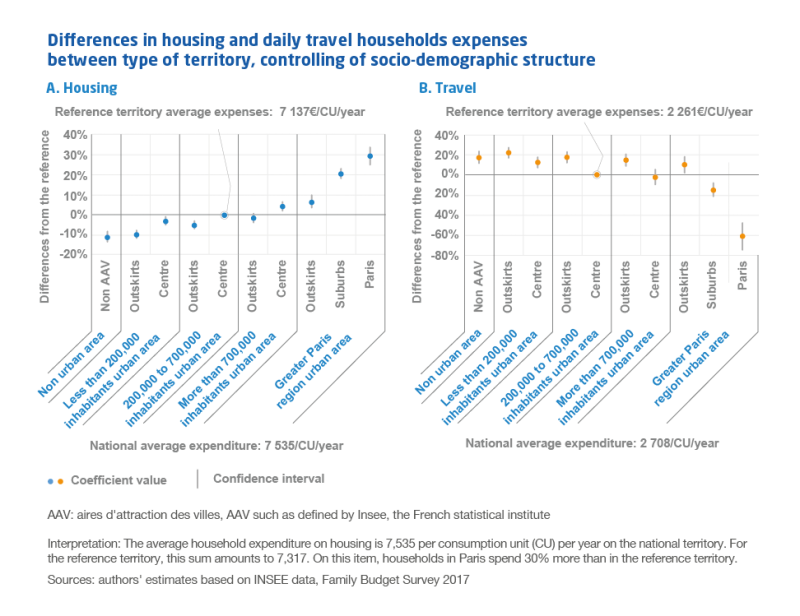
When considering aggregate expenses for housing and travel, the differences between territories seem large at first sight, but they are explained to a large extent by differences in the socio-demographic structure of households. For a given household, these cumulative expenditures do not differ significantly from one type of territory to another. An exception is the Parisian urban area : when taking into account the socio-demographic composition, differences compared to the other territories are halved but remain significant.
If we consider housing alone, the larger the city and the closer it is to the centre, the higher the expenditure. A Parisian household spends 30% more than the same type of household living in an urban area with a population of 200,000 to 700,000, which itself spends 10% more than a similar household in a rural area. For equal surface area of the housing, these discrepancies would be even wider, respectively more than 75% and more than 40 %. In sum, households compensate for high prices by using smaller areas.
As regards travel expenses, there is no significant variation depending on the size of the urban area, but within the areas, expenditure is higher in the outskirts than in the centres. The average gap is about 20% between the centre and the outskirts of areas with a population of more than 200,000. However, it concerns a level of expenditure that is three times lower than for housing. Expenses for cars and their depreciation costs are the main driver of the differences in daily travel expenses.

[1] Aires d'attraction des villes, AAV such as defined by Insee, the French statistical institute.






